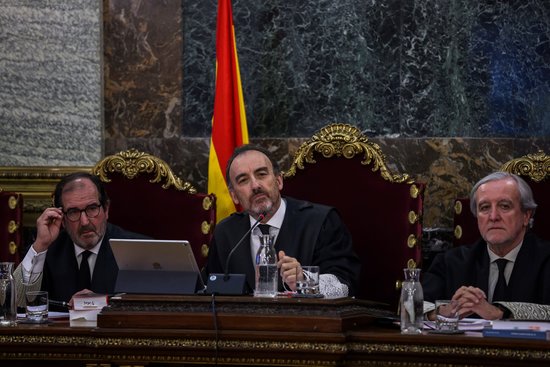Supreme Court to begin watching referendum footage
Catalan trial enters new phase with hundreds of videos to be shown of what happened during bid to split from Spain in autumn 2017

A new phase of the trial of Catalan leaders in Spain's Supreme Court began on Monday, with the next three days devoted to showing hundreds of videos of what happened in the lead-up and during the unilateral independence referendum in 2017.
Both the defense and the prosecution have asked for videos to be shown, in the first case to contradict the version of events put forward by many Spanish police officers, and in the second to counter the claims that the attitude of voters was peaceful.
The footage to be shown in court will focus on the mass protests that took place on September 20 against Spanish police raids aimed at halting the vote, and what happened on the day of the referendum on October 1.
Videos were not shown during the witness stage of the trial, and in this documentary phase no commentary on the footage will be allowed, the video will merely be identified and its duration and the place where it was filmed stated.
Proposing and objecting to evidence
Yet, Monday's session began with the prosecution detailing the evidence it wishes to present, which includes police reports on activities allegedly related to the misuse of public funds, and on raids of the defendants' homes and on businesses in which material for the referendum was seized.
After making its objections to various pieces of evidence it argues should be dismissed, in the afternoon the defense presented its list of proposed evidence, "expressly" asking that images and video showing the "violence" of Spanish police during the October 1 referendum be shown in court.
While the Spanish Attorney General did not object to showing the videos that the defense demanded, the Solicitor General and the private prosecutor representing the Vox party argued that showing the videos is unnecessary.
As Monday's session drew to a close, the presiding judge said that on Tuesday the session would begin with the rest of the prosecution's objections to the evidence put forward by the defense.